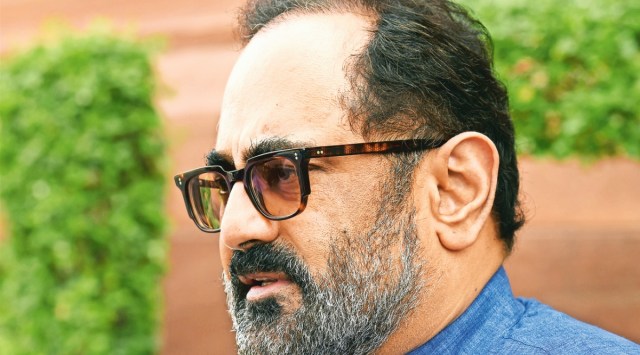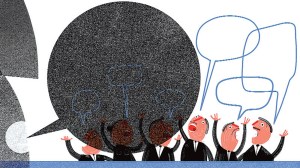“Should online intermediaries be entitled to safe harbour at all,” asked Minister of State for Electronics and IT Rajeev Chandrasekhar Thursday as he presented a broad overview of the upcoming Digital India Bill – the proposed successor to the decades old Information Technology Act, 2000.
The proposed law will affect a whole host of entities on the Internet including social media, e-commerce, and artificial intelligence-based platforms.
Chandrasekhar said that the core objectives of the new Bill are to ensure an open and safe Internet in the country to ensure users’ rights and reduce risks for them online; and accelerate the growth of technology innovation. The Bill is a key pillar of an overarching framework of technology regulations the Centre is building which also includes the draft Digital Personal Data Protection Bill, 2022, Indian Telecommunication Bill, 2022, and a policy for non-personal data governance.

The answer to Chandrasekhar’s question, should the government not lean on the current regulatory status quo, could bring about a fundamental change in how a crucial part of the Internet’s infrastructure — from big technology platforms like Google, Meta and Twitter to internet service providers Reliance Jio, Bharti Airtel and Vodafone Idea — offer services to their users.
Story continues below this ad
Safe harbour is legal immunity that online intermediaries enjoy against content posted by users on their platforms, as long as these platforms abide by certain due diligence requirements such as censoring content when asked by government or courts. The concept originally came from Section 230 of the United States’ Communications Decency Act, which has been termed one of the “foundational laws behind the modern Internet”.
Under the Information Technology Rules of 2021 and subsequent amendments to it, the government has reined in safe harbour by introducing additional due diligence requirements such as appointing India-based employees to liaison with the government and address users’ queries. More recently, three government-appointed appellate committees were also formed to adjudicate on unresolved user grievances.
“In the 2000s, intermediaries equalled safe harbour, but today they have morphed into multiple types of participants on the Internet that are functionally very different from each other and require different types of guardrails and regulatory requirements. Indeed, a question – how many of them should be entitled to safe harbour,” Chandrasekhar said.
“What should we consider as a safe harbour for intermediaries? Who should be entitled for safe harbour and should the government at all be playing the arbiter between platforms and those who are aggrieved by content on them,” the minister said. “There is a greater diversity and complexity about the platforms that are on the Internet today and therefore, there is this legitimate question – should there be a safe harbour at all? If there is a need for safe harbour, who should get it?”
Story continues below this ad
The idea behind revisiting the concept of safe harbour has stemmed from the fact that in the two decades since the Information Technology Act was formulated, intermediaries have become more complex, Chandrasekhar said. He also said that owing to this complexity, there is a need to classify different types of intermediaries and form relevant regulations for each of them.
“Whether we call them different types of intermediaries, or different types of players on the Internet, or types of service providers is a decision we have to take. Be it e-commerce, digital media, search engines, gaming platforms, significant social media intermediaries, and for good measure fact-checking portals too,” Chandrasekhar said.
The Indian Express was the first to report in December 2022 that the government was considering classification of intermediaries and separate norms for them and could include fact-checking platforms in it as well.
The proposed law will also regulate a range of crimes that the government thinks are unique to the online space. Chandrasekhar said that the “weaponisation of misinformation” under the garb of free speech will not be entertained and will be regulated under the Bill. Other harms include cyberbullying, doxxing, and identity theft. The Indian Express had earlier reported on all these categories of harms the government was looking at regulating under the Bill.
Story continues below this ad
An effective adjudicatory mechanism will also be explored under the Digital India Bill. The mechanism should be easily accessible, deliver timely remedies to citizens, resolve cyber disputes, and create cyber jurisprudence going forward, he said.
Chandrasekhar said that the Centre will hold extensive consultations before finalising the Bill. However, he remained non-committal about timelines around when the Bill can be finalised, but said that the process will be completed in 2023.

































